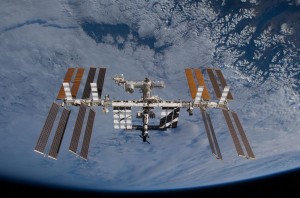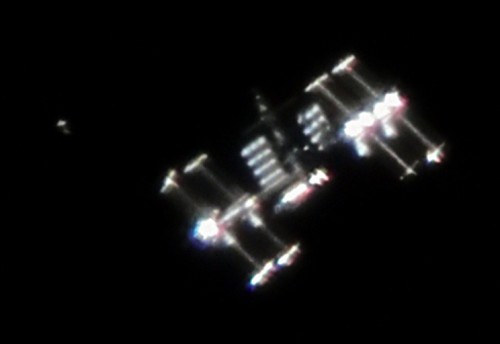The International Space Station is amazing. Humanity has a permanently manned space station.
You may think I’m saying that in every article of this series, and I probably am. But that’s because space and our accomplishments are quite frankly brilliant!
Mir
The International Space Station (or ISS) is not the first manned space station. The Russian space station Mir is widely considered the first successful long-term space station. Before the launch of the ISS, Mir was the largest satellite in orbit, and until 2010 when its record was surpassed by the ISS, Mir housed the longest continuous human presence in space; an impressive 10 years.
The Russians were leaders in space station technology, and without their expertise, I would argue the ISS would not be here today.
A Joint Venture
 The ISS is a joint space venture between Russia, the United States, the European Space Agency (the people who put Philae on a comet) Japan, Canada and Brazil.
The ISS is a joint space venture between Russia, the United States, the European Space Agency (the people who put Philae on a comet) Japan, Canada and Brazil.
The station was initially launched in in 1998 and has been continually manned since November 2000. Currently the station’s future is confirmed until 2020. It’s long-term future is to be determined by the relations between its key partners, the US and Russia.
The ISS is constantly being improved and upgraded, and is still being built. Amongst their most recent upgrades, includes the installation of a 3D printer. All the add-ons and upgrades are making the station heavier and heavier, and it now weighs more than 400 tonnes! But don’t worry, it isn’t going to fall from the sky any time soon.
The ISS can be seen from Earth, and if you have a pretty jazzy telescope, then you can view it in pretty remarkable detail. If you want to give it a go, check out NASA’s ISS spotters guide.
You can also track the ISS, and see exactly where above the Earth it is in real time. Check out this site which has a live view of what part of the planet the station is over. You may be surprised just how quickly it is moving!
Next Week
After the Thursday post last week and yesterdays site issues, I’m hoping that next Monday’s post will go without a hitch! See you then.


